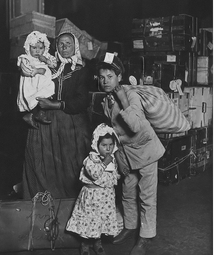Lesson 1:

Journey
Students will use an interactive quiz and infographics to compare their initial perceptions – often shaped by assumptions, stereotypes, or prejudices – with real migration data from their country. They will confront common misconceptions and explore the factors that shape their understanding of migration.
Alongside, you’ll find a Lesson Plan with step-by-step guidance, plus direct links to all materials, i.e., the quiz and the infographics.
Lesson 2:

Lives
In groups, students receive limited information about four people with migration backgrounds and try to guess their country/region of origin, profession, and family situation. Then, they listen to audio recordings of the real stories and compare their assumptions with reality. This activity opens a discussion on how perceptions are formed and how they shape our attitudes toward others.
Alongside, you’ll find a Lesson Plan with step-by-step guidance, plus direct links to all materials, i.e., game cards and audio recordings.
Lesson 3:

Past
Students receive a set of cards and work to match objects or cultural phenomena with the historical events they are linked to. Through these stories of migration, students explore the social and historical processes behind the movement of objects and traditions. They also reflect on which objects from their own culture hold personal or cultural significance.
Alongside, you’ll find a Lesson Plan with step-by-step guidance, along with direct links to all materials, i.e., game cards and the answer presentation.
Lesson 4:

Ties
Students explore the concept of identity through two group activities that address feelings of inclusion and exclusion. These exercises help students develop empathy for the experiences of migrants and gain insight into how diversity shapes group dynamics and communication.
In the Tsunami Game, the class is divided into small groups and faced with a scenario that forces some members to join other groups. The newly formed groups must then negotiate and agree on shared values.
The second activity, the Silent Sticky Note, invites students to form a circle without speaking, following a simple instruction.
Both games encourage reflection on how groups are formed, how individuals feel when trying to fit in, and the different roles people take on in social settings.
Alongside, you’ll find step-by-step guidance for the Tsunami Game and one for the Silent Sticky Note activity.